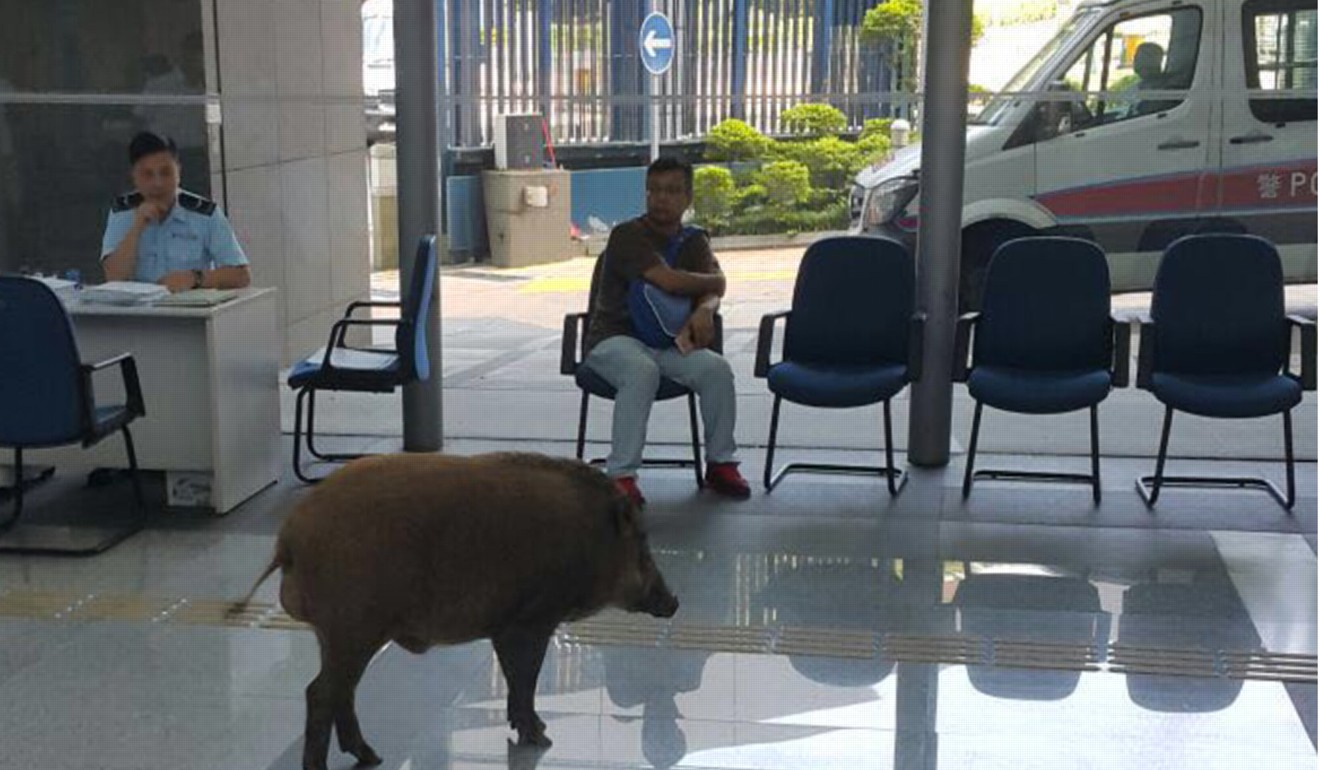Hong Kong tackles wild pig problem with birth-control scheme, as complaints of animals entering urban areas spike
Over two years, the government will assess if its plan to inject the pigs with contraceptives before releasing them into the wild reduces their population

With complaints of wild pigs straying into Hong Kong’s villages and urban areas more than doubling in the last five years, the government recently launched a pilot programme to control their population by injecting them with a contraceptive.
Secretary for Environment Wong Kam-sing highlighted the plan to the Legislative Council on Wednesday, in response to a lawmaker who asked how the government would protect residents fearful for their own safety.
The number of complaints to the Agriculture, Fisheries and Conservation Department (AFCD) rose from 294 in 2013 to 738 last year. Wild boars have in recent years shown up in shopping malls, private housing estates and theme parks across the city.
The government said the spike could be due to people feeding them.
The department’s scheme, to be tested over two years, involves veterinary surgeons using a tranquilliser dart gun to first get hold of the pigs, then injecting them with a contraceptive vaccine, before implanting a microchip and GPS transmitter into healthy animals.
The boars would then be released back into rural areas, the department monitoring them to assess the scheme’s efficacy.
Wild pigs are the largest land mammals in Hong Kong. Adults can weigh up to 200kg and measure up to two metres long. Experts said they may turn up in urban areas due to changes in the weather or their natural habitat.
Last month, a wild boar was filmed running around at Deep Water Bay. In January, five young wild pigs died in a suspected hit-and-run case in Tai Mo Shan Country Park.
Wong stressed the most effective way to reduce the incidents of wild pigs showing up in residential areas was to stop feeding them, a message the department was promoting through public education.
“The public’s feeding will give wild pigs the wrong impression that there is a stable food supply, and attract them to appear regularly near urban or residential areas,” he said.

But lawmaker Jeffrey Lam Kin-fung, who submitted the question, stressed that residents wanted better preventive measures, as the pig problem was growing.
“The residents not only feel that the wild pigs affect road safety, but also cause a nuisance in residential areas,” he said.
“Some elderly and children do not dare to go hiking.”
Lam added that these affected residents could not wait two years for the pilot programme to be completed.
But Wong, who declared he was an avid hiker, said that as long as people remained calm and did not disturb the wild pigs or feed them, it was safe.
Dr Howard Wong Kai-hay, executive director of City University’s school of veterinary medicine, said that in most situations wild pigs would not deliberately attack people, if unprovoked.
But when they do attack they can be dangerous, he warned. In particular, people should not approach a pig with its young.
Roni Wong Ho-yin, director of the Hong Kong Wild Boar Concern Group, questioned whether wild pigs really posed a danger or a threat to people and their property.
“Some people complain about wild pigs affecting road safety, but it is actually us encroaching into their habitat because of overdevelopment,” he said.
While many wild animals are protected under Hong Kong law, wild pigs are considered pests and not subject to legal protection, unless they are harmed within country parks.
Reports of injured or trapped boars must be made to the AFCD, while those found dead should be reported to the Food and Environmental Hygiene Department.